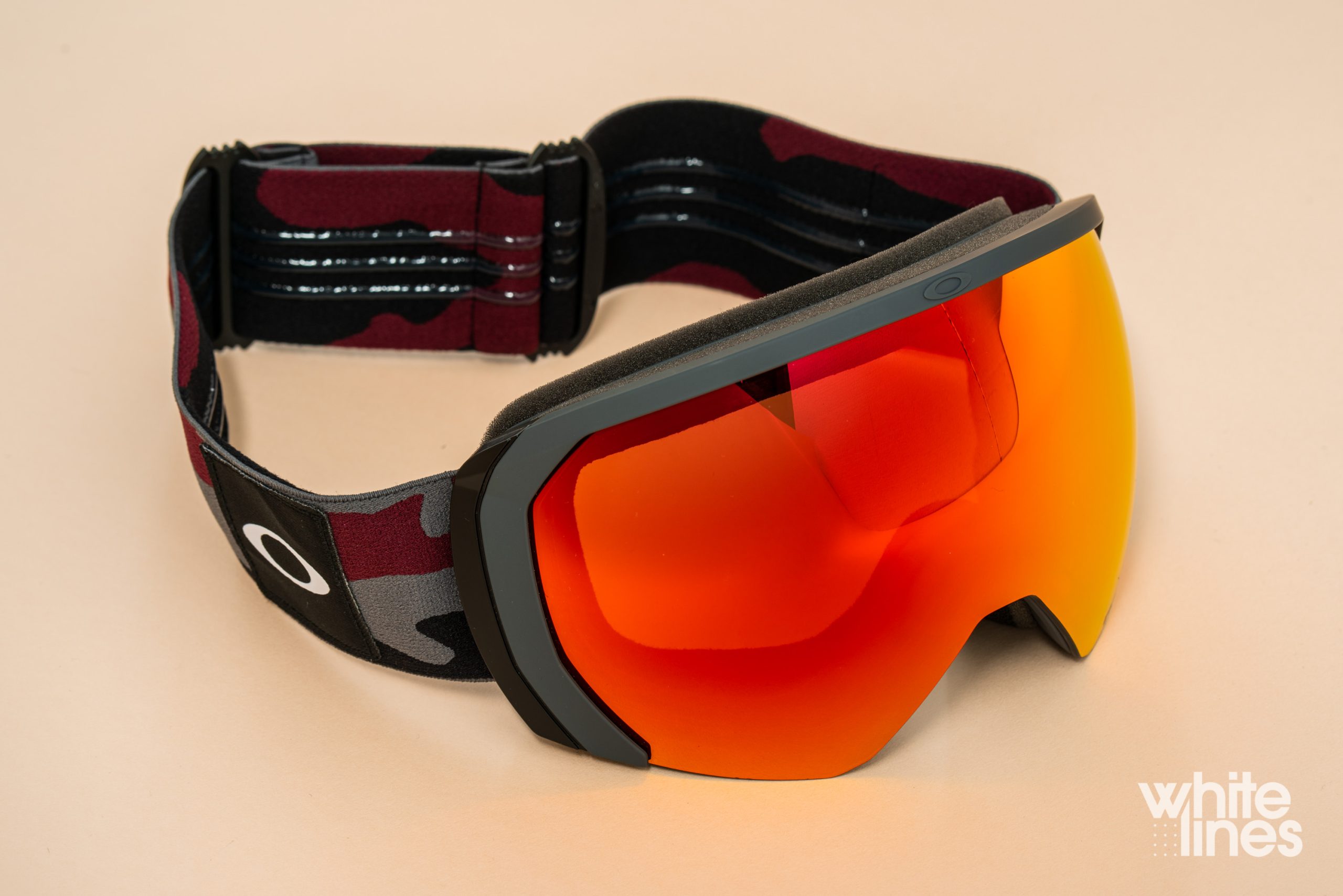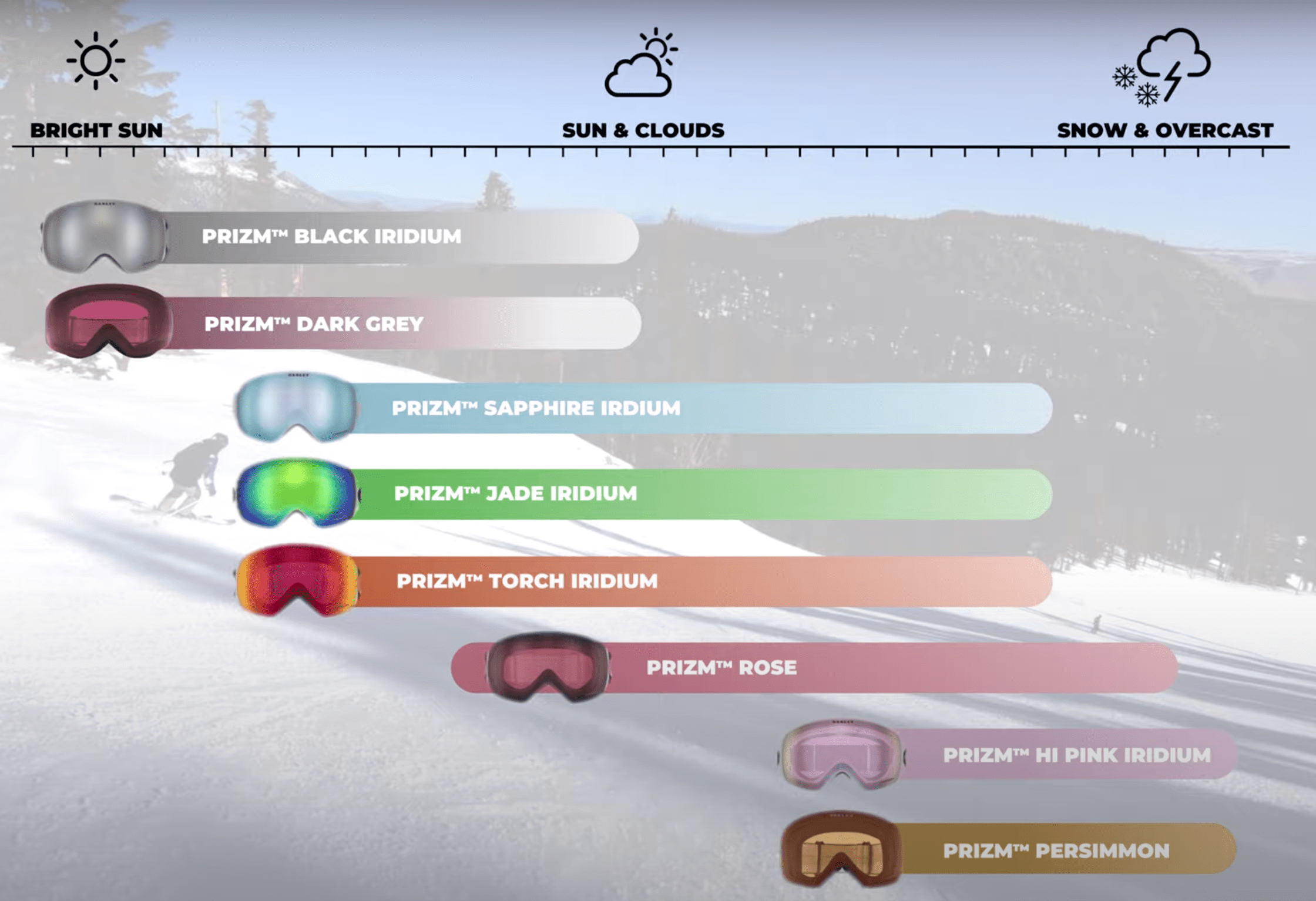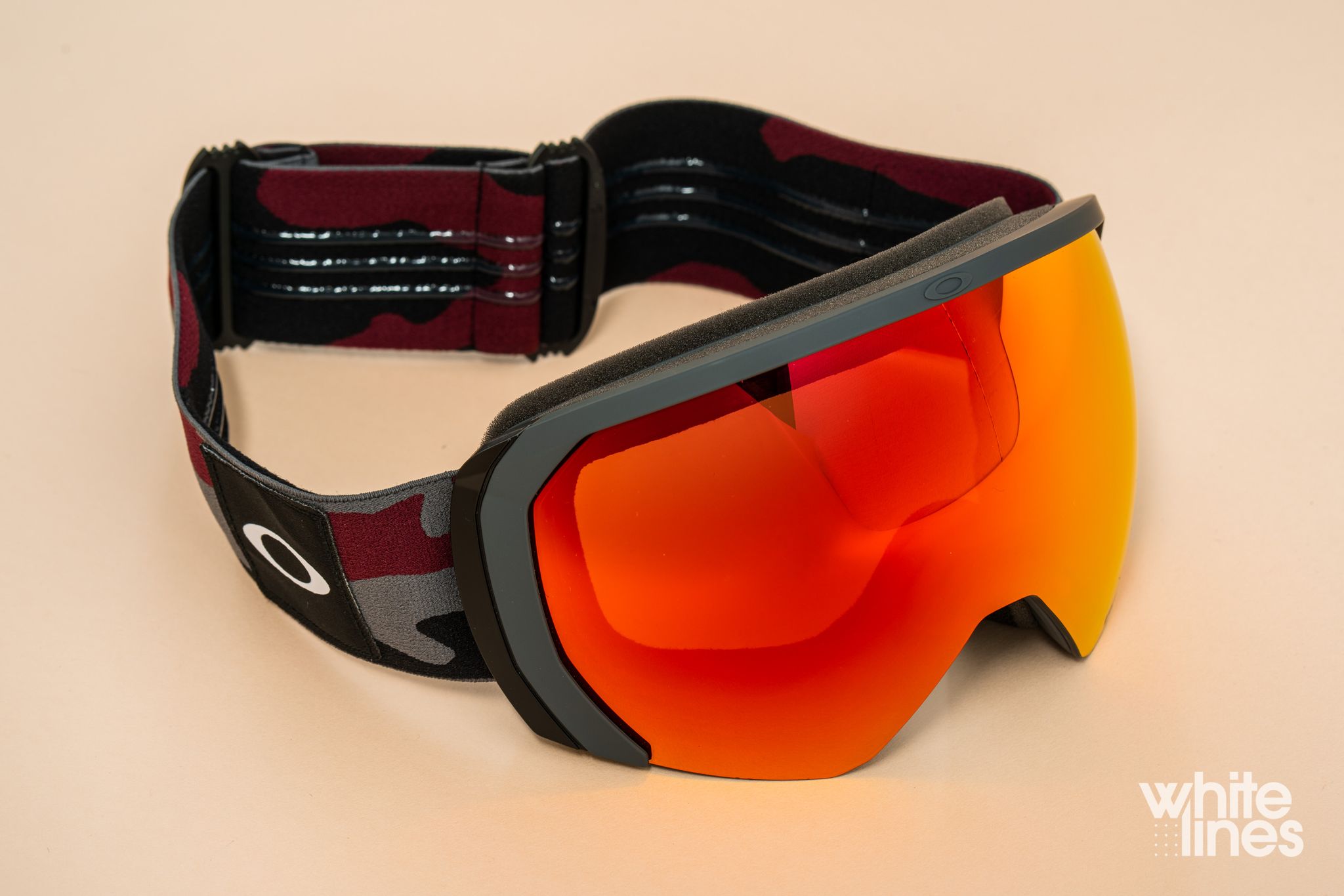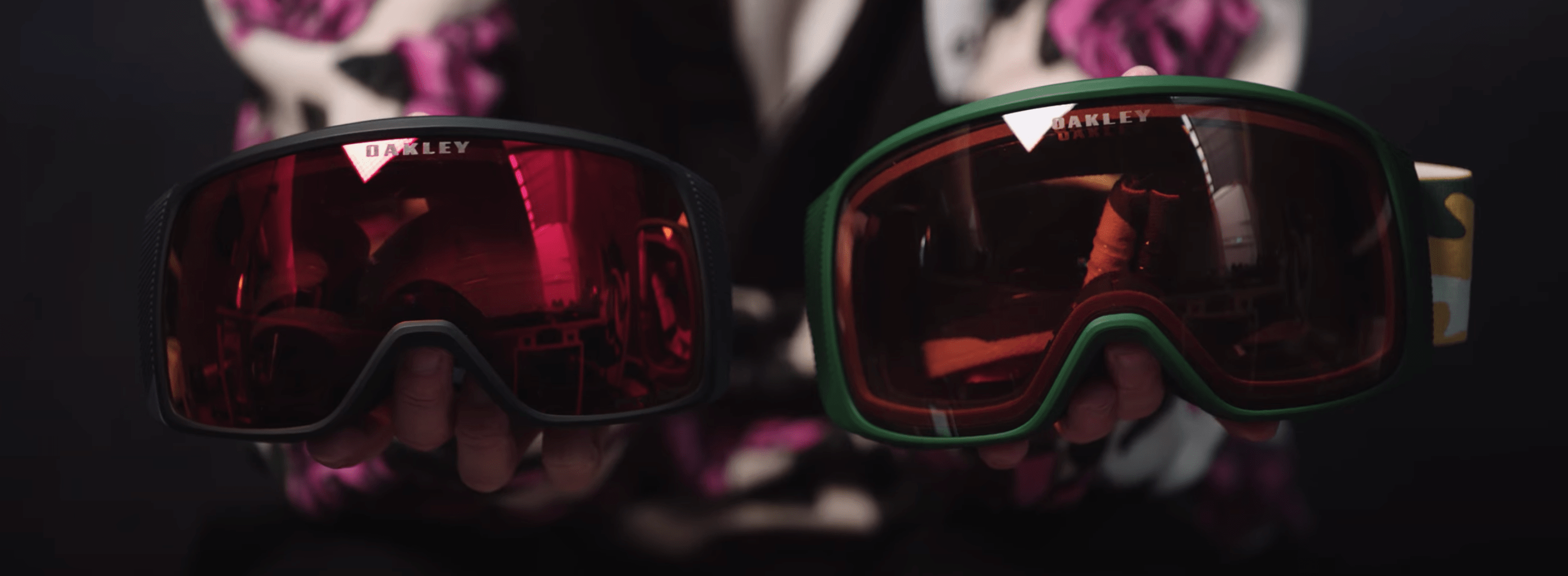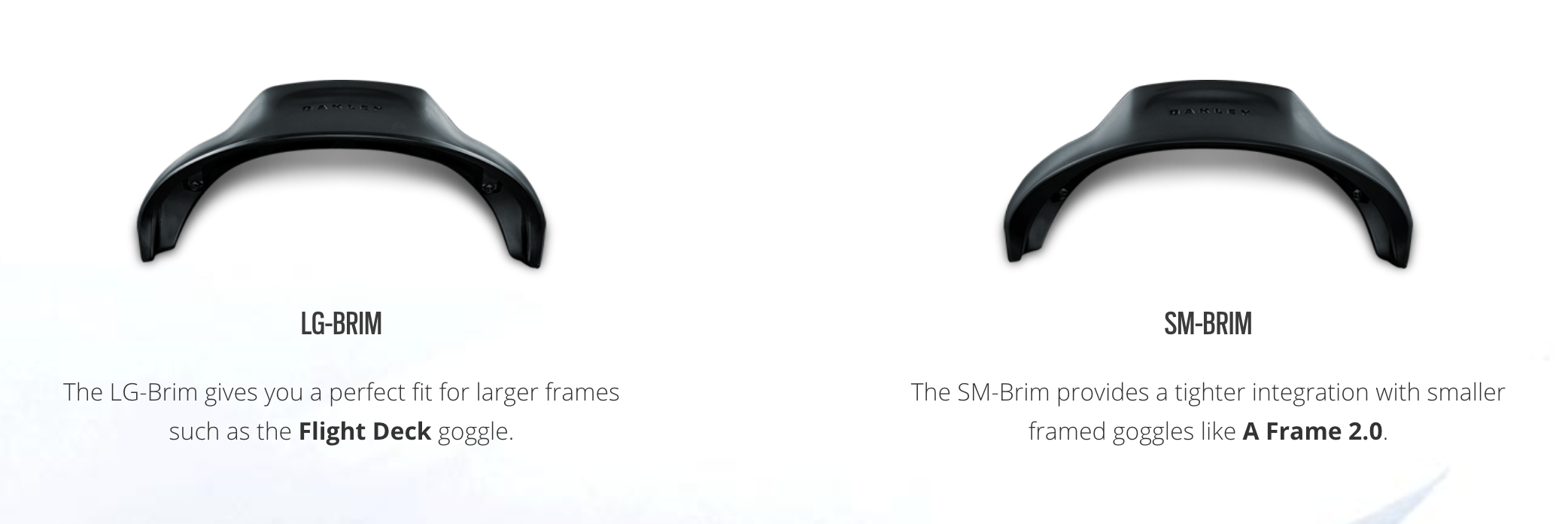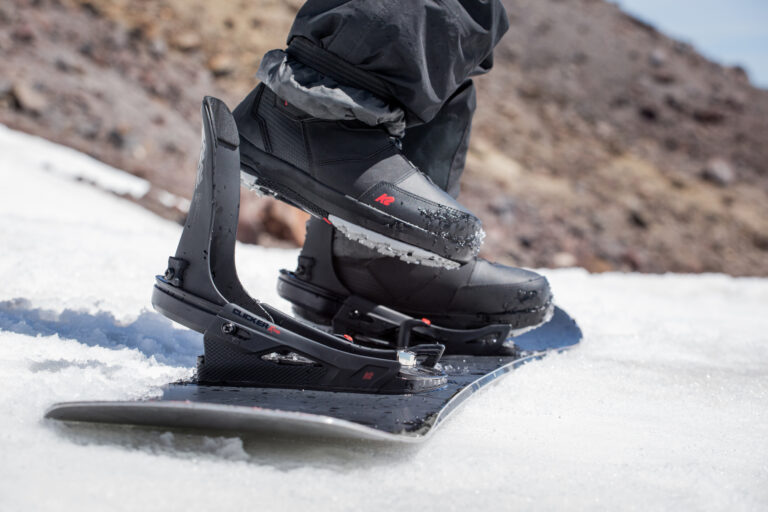Oakley was set up in the back of a garage in 1975, and by 1983 they’d brought their first snow goggle to market. Fast forward 37 years, and the name ‘Oakley’ is synonymous with the very best in eyewear, boasting a class beating R&D team, who have pioneered almost every major innovation in the industry. Oakley aren’t just a goggle brand, they’re the goggle brand.
“Prizm lenses work to filter specific wavelengths of light, emphasising colours to which your eyes are more sensitive”
There are so many different options on the market, and it can be overwhelming at times to try and decide which goggles are best suited for you. Like with most things in life, there’s no black and white, right or wrong with goggles, it’s all about addressing the situations you might find yourself in and the preferences that you have. We’ve put together this guide to help break down some of the information and to help you decide which goggles are all systems go.
Prizm
Lenses tend to be the focal point when checking out a new goggle, whether it’s the colour or the shape, they’re usually the first thing to catch your eye. There’s an abundance of different styles of lenses out there, and it’s not always clear which option is the best for you.
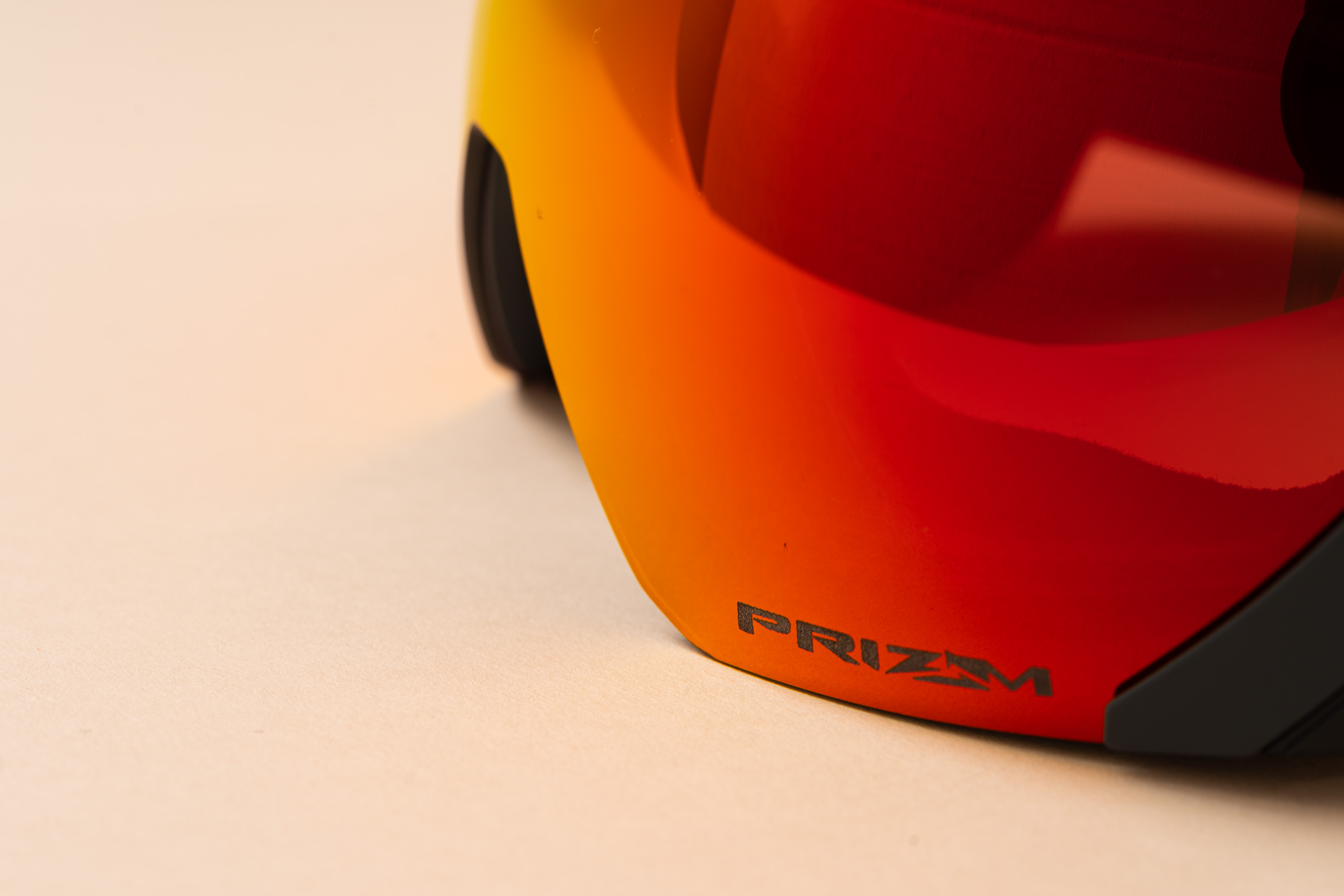
As of 2020 all Oakley offerings use their contrast enhancing Prizm snow lenses. Prizm lenses work to filter specific wavelengths of light, emphasising colours to which your eyes are more sensitive, which in turn maximises visibility and clarity. You can detect previously unseen detail in the landscape, allowing you to react faster and ride with more confidence.

